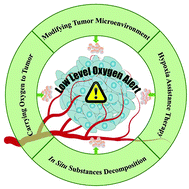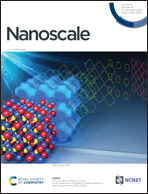Smart strategies to overcome tumor hypoxia toward the enhancement of cancer therapy
Abstract
Hypoxia, as a typical factor in a tumor microenvironment, plays a vital role in tumor treatment resistance, tumor invasion and migration. Hypoxia inducible factor (HIF), as the vital response element of hypoxia, mediates these untoward effects through a series of downstream reactions. Cancer treatments such as photodynamic therapy (PDT), radiotherapy (RT) and chemotherapy are severely hindered by hypoxia and HIF, back, however, could be intelligently manipulated through nanocomposite materials for their great potentiality to combine different functions. Herein, we reviewed the smart strategies in emerging research studies to overcome hypoxia toward the enhancement of tumor therapy.

- This article is part of the themed collection: Recent Review Articles


 Please wait while we load your content...
Please wait while we load your content...